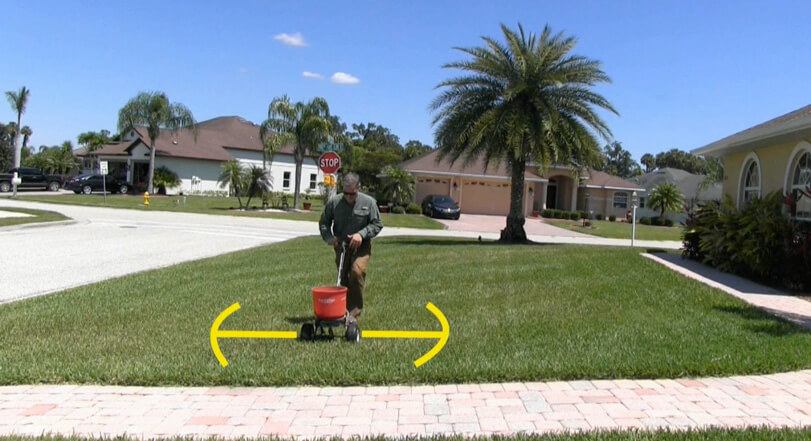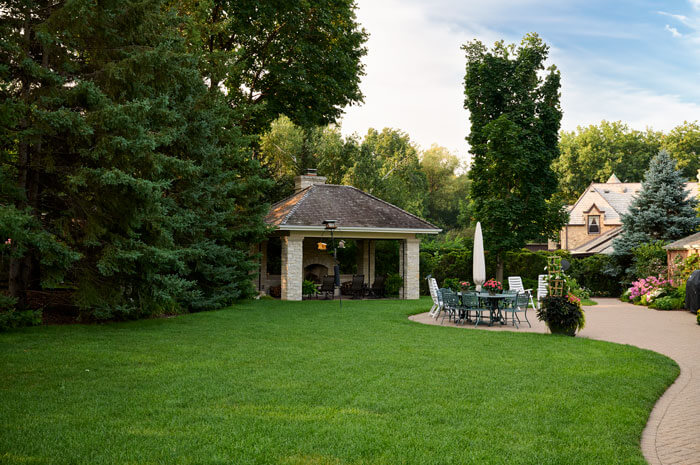
When the time to fertilize your lawn arrives, do you know what steps to take? Walk through the process with Allyn Hane, The Lawn Care Nut, for his suggestions on how to get the most out of your application.
“You’ve got your chosen fertilizer ready to go, you’ve weighed out the proper amount to cover the exact lawn space that you’ve got, now, how do you actually put it down? Well, in today’s Toro Yard Hack, I’m literally gonna walk you through, step-by-step.
Using a Broadcast Spreader
So first off, I’m gonna recommend that those of you with lawns twenty-five hundred square feet and larger utilize a broadcast spreader in your application.
The primary way you know you have a broadcast spreader is to locate the impeller just under the bucket below the drop holes. If it looks like a wheel, disc, or plate with fins on it, then you probably have a broadcast spreader. This impeller throws even amounts of product across a wide swath, typically four to six feet wide, depending on your spreader model and your walking speed. And when done correctly, like I’ll show you next, delivers beautiful consistency across larger expanses of lawn space.
Maintaining a Consistent Speed
The next thing to think about is walking speed, which most people tend to stay around three to three and a half miles per hour. Which, if I’m to equate that to a visual, I would say that it looks like a double-fast walk.
Another key being that whatever speed you begin at, should be the speed that you finish at. Otherwise, the width of your swath can vary along with your speed. In a nutshell, push it all the way through.
Approaching Application
And finally, let’s talk technique. Your first pass across a measured lawn space, like this one, should be what we call a trim pass. Most quality spreaders have a setting where you can adjust the rate of product flow to compensate for your trim pass, while in turn allowing you to get right up next to the sidewalk, street, or curb without getting any excess product off-target.
Once your trim and edges are established, it’s time to fill in the center areas. Start your first full pass so that the edge of your swath is throwing back to and just kissing the wheel marks of the previous pass. This is called the overlap and it’s important to take note of. From here, success comes in paying attention, watching your swath width as it pertains to the previous pass and keeping those passes in a straight, parallel line, like cornrows.
Now I know this can seem daunting when you first start out, I always recommend breaking your lawn into manageable sections and working them one at a time until you’re experienced enough to fill your hopper all the way up and take off a running.
For Toro, I’m Allyn Hane the Lawn Care Nut. As always, I hope this tip has been helpful to you! Thanks for watching, and I’ll see you in the lawn!”



